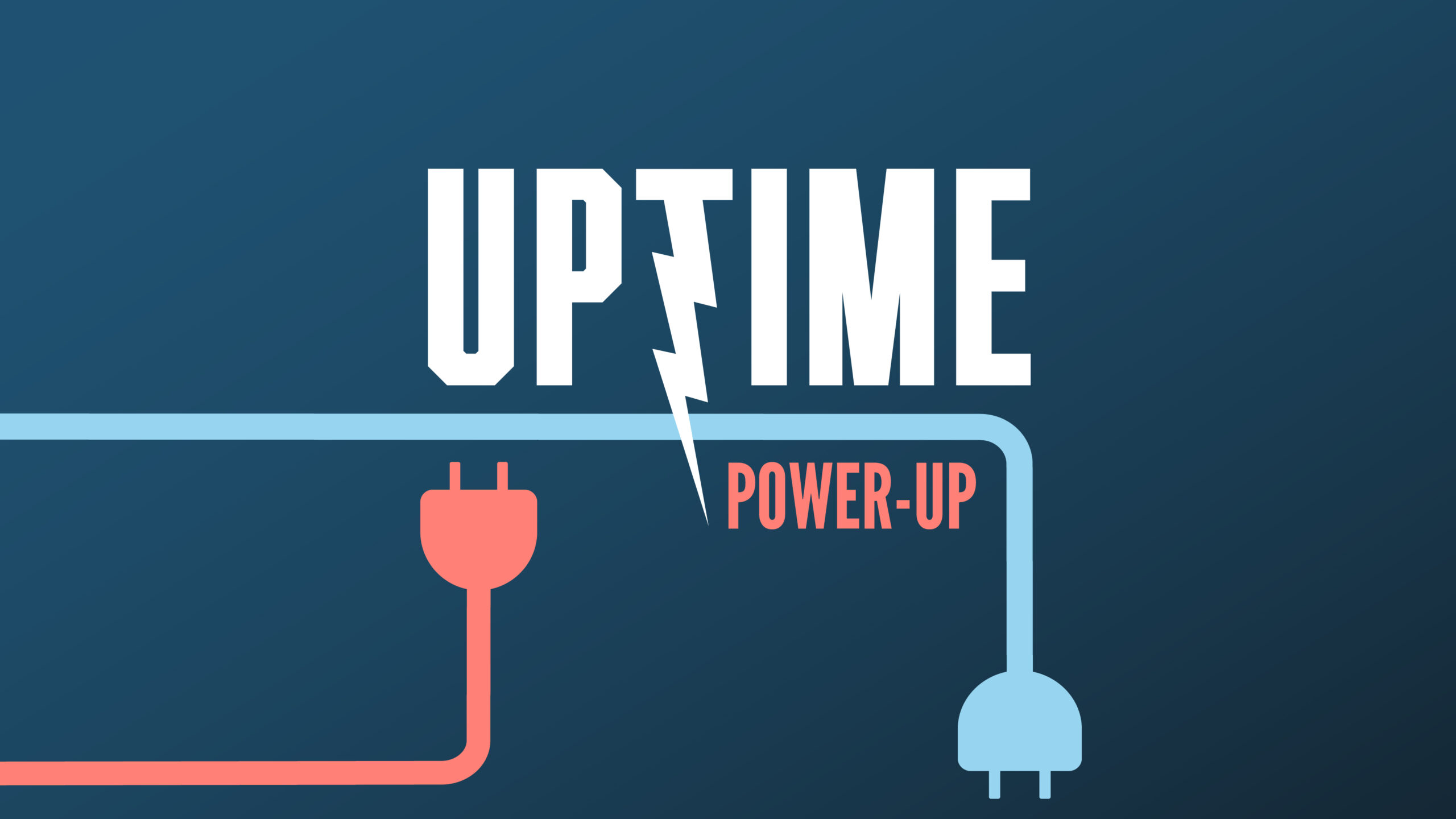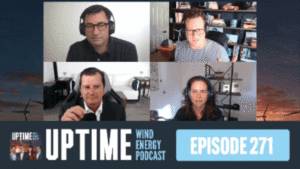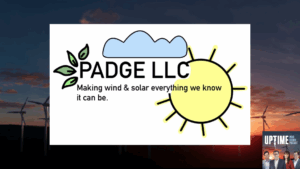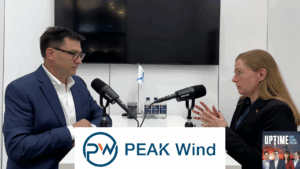Podcast: Play in new window | Download
We discuss Vestas’ anti-oscillation blade tool, which seems to have a dual purpose, Windspider’s self-erecting tower method, and a terrifying way to disguise vaccinations for kids.
Fill out our Uptime listener survey and enter to win an Uptime mug! Register for Wind Energy O&M Australia! https://www.windaustralia.com
Sign up now for Uptime Tech News, our weekly email update on all things wind technology. This episode is sponsored by Weather Guard Lightning Tech. Learn more about Weather Guard’s StrikeTape Wind Turbine LPS retrofit. Follow the show on Facebook, YouTube, Twitter, Linkedin and visit Weather Guard on the web. And subscribe to Rosemary Barnes’ YouTube channel here. Have a question we can answer on the show? Email us!
Pardalote Consulting – https://www.pardaloteconsulting.com
Weather Guard Lightning Tech – www.weatherguardwind.com
Intelstor – https://www.intelstor.com
Phil Totaro: This is Power Up, where groundbreaking wind energy ideas become your clean energy future. Here’s your hosts, Allen Hall and Phil Totaro.
Allen Hall: Well, Phil, our first idea of the week is from our friends at Vestas, and it’s an anti oscillation tool for wind turbine blades. And how this patent is described, it’s like a sock for your wind turbine blade with a little bit of a covering over the trailing edge serrations, and you slide this device on And it stops oscillations during deployment, when the, when the turbine may be a little more vulnerable, it’s not a full operation, maybe in lockouts, where you really don’t want any lift, and particularly you don’t want any oscillations that could, in theory,
Phil Totaro: Yeah.
And maybe it’s an idea that GE should have come up with or LM should have come up with first considering some of the issues they’ve had this year. But what’s kind of fascinating about this though, is that this isn’t necessarily a new idea from the perspective of putting a little sock on the end of your wind turbine blade to protect the tip during a lift.
Usually it’s for making sure that you don’t damage the serrations or whatever you’ve stuck on the trailing edge of the blade. In this case, Vestas and, and I’m, I’m kind of expressing my opinion or suggestion here that I think Vestas is basically trying to get an extra 20 years of life on a patented concept that, They, are potentially using on a daily basis for that construction purpose.
They found another way to describe that same technology and as an anti oscillation tool.
Allen Hall: You ever seen a device called a slap chopper, Phil? No. It slices and it dices. Oh, that thing. Yeah, I have. I have. So what they’ve To have done, in a sense, is they’ve taken the Slapchopper and got a patent for slicing, and then when that got close to expiring, they came back and said, well, it dices too, which is a separate patent, and thereby you can extend the same device for Covering two areas.
It’s very unique way of patenting and very effective by the way. It’s smart.
Phil Totaro: Yeah, it is. If, if you’re trying to capture and protect your IP, but it also doesn’t say much for the patent examiners we’ve ever had in this industry who can’t seem to recognize that this is what companies are doing because this is not the first time this has happened.
I can recall a few examples in the past where companies had You know, had, their 20 years of patent protection on a concept and then repatented basically the same thing and said, Oh, well, it’s not for cooling. It’s for vibration damping, or it’s not for one thing. It’s for something else. So it looks like that’s what’s happening here.
And, I guess kudos to Vestas for trying and maybe not so many kudos to the U. S. Patent Office for allowing stuff like this to get pushed
Allen Hall: through. Roncopeel made a living doing that. If you’re familiar with Ronco, it’s Christmas time and every Christmas you would have another Ronco product, which slices, dices, cooked a chicken or something.
Phil Totaro: All at the same time?
Allen Hall: So our next idea is from Windspider and it’s a method to basically raise a wind turbine tower with a crane. It’s sort of, an erector set that builds upon itself. So It kind of hoists itself by its own petard in a way, and it lifts itself up. You can put more infrastructure behind it.
You lift it up some more, put more infrastructure behind it, and you can build a turbine tower with it. Really no large external crane. Everything happens right on the tower itself. This has applications, Phil. Particularly offshore, I think this makes a whole bunch of sense. I haven’t seen it implemented though.
And this patent is new within the last couple of months. I expect this one to happen somewhere.
Phil Totaro: Yeah, this is one that if Windspider is going to be able to get enough capital together to do some kind of a prototype demonstration, they might actually catch on with doing this, particularly with larger either onshore machines or certainly offshore machines where Again, minimizing the amount of crane time is going to become important both from crane availability as well as how tall they could theoretically make the towers, because this is basically a method for self erecting a tower where you can actually put and they actually go into some detail about how you can actually install the tower based on staves or segments.
And it can be a tower of either concrete or steel construction or they could even plot this thing to on top of a a concrete base. We talked a couple of weeks ago about Max Bogle, making these hybrid towers. You could use this to then construct the, the steel tube.
portion of a hybrid tower at the top. So, it’s it’s a clever idea. Our
Allen Hall: fun patent of the week isn’t all that fun. And if you’ve ever been a kid or if you have children, you realize that syringes are not your friend. And so when you go visit the doctor for your annual physical, you’re always dreading that, oh, I think you’re ready for another tetanus shot or you need some sort of booster shot, which seems to happen at every checkup until you’re like, 18 years old.
Maybe 21. Maybe until you’re 50 at this point. There always seems to be another booster shot in your medical chart. Well, this inventor, Robert Smetton decided that enough is enough. We need to make needles more friendly. So his invention is to modify the syringe barrel with an attachment that makes it look like a pleasing animal, like a happy bunny.
Or a little puppy dog. So instead of seeing a syringe Headed for your arm or maybe a lower part of your anatomy. Now you’re seeing this fuzzy little bunny coming at you. So thereby permanently associating nice fuzzy animals with pain. And I cannot figure out, Phil, how this patent actually got through the process and thinking somebody was going to buy it, but here’s the
Phil Totaro: thing.
People file patents all the time for stuff that never actually gets built. I hope that this was one of them, because I gotta be honest. Like this is. Probably the most terrifying thing that you could ever do to a child because now it’s, it’s a fuzzy bunny and it’s, it’s not even just like the physical pain associated with the fuzzy bunny.
It’s a bunny with a needle poking out of its mouth and face. Like this is absolutely terrifying. Like I, I don’t like needles in the first place. This would scare the crap out of me. So yeah, I don’t, I don’t like this one at all.
Allen Hall: But what if it’s country specific? Like you’ve done in Australia, you’d have a koala bear, a little baby koala bear with a needle.
Phil Totaro: You’d have a hoop snake with a needle coming out of it. I don’t know.
Allen Hall: There you go, right? It just, it just seems terrorizing, but hey, it’s a patent. There’s all kinds of crazy patents.










